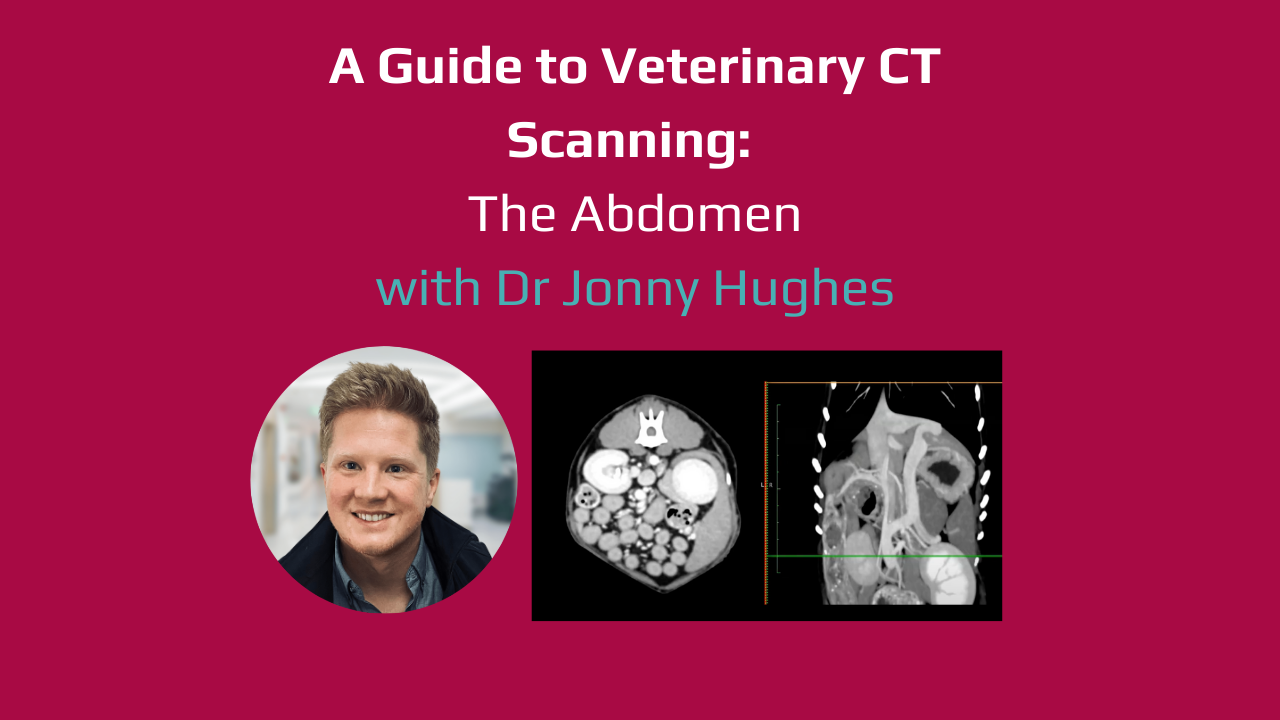What is polydipsia and polyuria in dogs?
Polyuria (PU) and polydipsia (PD) is a common presentation in dogs and is mostly caused by primary polyuria, with compensatory polydipsia. It can be a diagnostic challenge due to the wide range of possible causes and cost associated with thorough investigation of all possibilities. This article will provide guidance on pragmatically navigating the diagnostic pathway of PU/PD in dogs.
Polydipsia (PD) is defined as fluid intake >90-100ml/kg/24 hours and polyuria (PU) as urine output >50ml/kg/day. They are usually both present, but primary polyuria is more common than primary polydipsia.
It is important to gain information about the dog’s voiding behaviour, such as the presence of;
- straining/dysuria
- increased frequency/pollakiuria
- urine leakage/incontinence
- change in drinking behaviour e.g. drinking from puddles, plant drip trays, bath, tap, toilet
What can cause PU/PD in dogs?
Primary Polyuria is more common than primary polydipsia. It results from decreased urine concentrating ability due to, for example, lack of antidiuretic hormone (ADH), insensitivity to ADH or an osmotic diuresis, and is accompanied by compensatory polydipsia. N.B. the more common causes are shown in bold.
- Osmotic diuresis due to increased renal tubular solute load
- Diabetes mellitus (DM)
- Renal glucosuria (Fanconi syndrome, jerky treat ingestion)
- Post-obstructive diuresis
- Secondary nephrogenic diabetes insipidus (acquired) due to renal insensitivity to ADH
- Pyometra with endotoxaemia in middle-aged, entire dogs
- Prostatitis with abscessation
- Pyelonephritis
- Chronic kidney disease (CKD)
- Polyuric acute kidney injury (AKI)
- Liver disease
- Hyperadrenocorticism (HAC)
- Hypoadrenocorticism
- Hyperthyroidism (raw fed dogs)
- Hypercalcaemia
- Hypokalaemia/ Hyponatraemia
- Drugs/toxins e.g. phenobarbitone, bromide, glucocorticoids, diuretics
- Acromegaly
- Hyperaldosteronism
- Pheochromocytoma
- Polycythaemia/erythrocytosis
- Primary diabetes insipidus (DI)
- Central DI [CDI] (idiopathic, trauma, neoplasia, post-hypophysectomy) - due to insufficient production or secretion of ADH
- Primary nephrogenic DI [NDI] (congenital, familial) - due to resistance to ADH action in kidneys which may be due to gene mutations
Primary polydipsia results from increased thirst and leads to compensatory polyuria to excrete the excess water. It is uncommon and often due to behavioural issues or secondary to defect in the thirst centre. Excessive water intake leads to physiological suppression of ADH secretion.
- Psychogenic polydipsia - typically young, hyperactive, large breed dogs
- Metabolic disorders e.g., hyperthyroidism, hepatic failure, hyperthermia, pain, stress, exercise
How do I narrow down the causes of PU/PD in dogs?
Step 1 – this will give you the diagnosis in most cases with PU/PD
- Thorough history
- Age, breed, sex
- Remember that the concentrating ability is not fully established till the dog is several months old and normal water intake is higher in the younger age group
- Reproductive history – was there a recent season? Incidence of pyometra increases with age.
- Diet/environmental changes – any change to dry diet or warm/humid environment? Raw fed?
- Overall health – consider co-morbidities and potential impact, including of any medications/supplements
- Appetite – the presence of polyphagia can increase the possibility of certain diseases e.g., DM, HAC, or EPI
- Drugs/toxins – many drugs can stimulate PU/PD e.g., glucocorticoids, anticonvulsants, diuretics
- Age, breed, sex
- Quantify PD where possible, by measurement of water intake
- Ensure genuinely PU rather than urinary incontinence/nocturia, pollakiuria or dysuria present
- Urine specific gravity (USG) is very important to help answer this
- Ensure no dysuria/pollakiuria reported by owner
- There may be a combination: PU may lead to incontinence in some cases due to exceeding the continence threshold
- Thorough physical examination
- Any suggestion of kidney or liver disease that might be resulting in secondary PU?
- Small, misshapen kidneys (CKD) or renomegaly (obstruction, infection, neoplasia)
- Small liver (chronic disease) or enlarged liver (metabolic [HAC, DM] or neoplastic)
- Any skin changes to suggest endocrine disease, e.g., alopecia, pot-belly?
- Any lymphadenopathy?
- Lymphoma is a common cause of hypercalcaemia
- Any other evidence of neoplasia?
- Anal gland (AG) mass – AG carcinomas are another common cause of hypercalcaemia
- Any vaginal discharge (pyometra)?
- Any suggestion of kidney or liver disease that might be resulting in secondary PU?
- Urinalysis [UA] (including culture and UPC and sediment analysis) can help to categorise causes and exclude true PU/PD if USG >1.035
- Hyposthenuria USG <1.008 indicates active dilution of glomerular filtrate in kidney
- Isosthenuria USG between 1.008 and 1.012: typical of kidney disease
- Minimally concentrated, USG between 1.012 and 1.029
- Haematology
- To exclude erythrocytosis/polycythaemia
- Assess for evidence of inflammation/neutrophil toxicity e.g., pyometra
- Assess presence of a stress leukogram
- Present in hyperadrenocorticism
- Absent in hypoadrenocorticism
- Biochemistry (including electrolytes, SDMA and bile acid stimulation)
- Diabetes mellitus is normally easily identified by presence of hyperglycaemia and glucosuria: more prevalent in Keeshonds, Samoyeds, Beagles, Schnauzers, Poodles
- Glucosuria with normoglycaemia is less common - investigate for Fanconi or other proximal tubular disorder is advised e.g., jerky treat exposure
- Azotaemia – elevated urea and creatinine are suggestive of kidney disease, but exclusion of pre and post renal causes is indicated
- SDMA persistently >20 ug/dL with inappropriate USG (sub-maximally concentrated) for level of dehydration is consistent with kidney disease
- Consider screening urine Cystatin B for evidence of subclinical active kidney injury
- Increased ALP +/- ALT – consider HAC in association with compatible clinical signs
- HAC: ALP increased in 90-95% cases, cholesterol in 75% cases, UTI present in 40-50% cases - more prevalent in terriers and miniature poodles
- Consider other liver diseases and other endocrinopathies e.g., DM
- Bile acid stimulation test and/or blood ammonia to include/exclude liver dysfunction or portosystemic shunt
- Low urea can indicate hepatic dysfunction or can be secondary to marked PU/PD
- Other indicators of hepatic dysfunction include hypoalbuminaemia and hypocholesterolaemia +/- hypoglycaemia
- Total calcium
- A normal total calcium mostly excludes hypercalcaemia, however some cases have a normal total calcium but an increased ionised calcium, so consider measurement of ionised calcium to include/exclude hypercalcaemia fully
- Increased calcium/hypercalcaemia
- HARDIONS is a useful mnemonic for possible causes:
- Hyperparathyroidism
- Addisons
- Renal
- vitamin D toxicity
- Idiopathic/ Infectious/ Inflammatory
- Osteolytic
- Neoplastic
- Spurious
- Primary hyperparathyroidism is more prevalent in Keeshonds and can be diagnosed as an incidental finding on routine screening bloods as clinical signs can be minimal
- Consider additional diagnostics based on clinical examination and blood results, including:
- Lymph node aspiration if enlarged
- Anal sac palpation and FNA/biopsy of any mass present
- Imaging – thorax/abdomen/neck
- Consider plasma PTH, PTHrP and vitamin D measurement to help differentiate causes
- HARDIONS is a useful mnemonic for possible causes:
8. Consider using the VetCompass™ Cushing's Diagnostic Prediction tool to guide how likely Cushing’s is as a cause of PU/PD
1. Consider abdominal ultrasound (assess for evidence of kidney disease, pyelonephritis, pyometra)
Step 2-
- Pyelonephritis is hard to diagnose – combine imaging (dilated renal pelvis), bloods, and UA, however intermittent shedding of bacteria can lead to negative urine culture and means you may need pyelocentesis or treatment trial if strong index of suspicion
- Assess adrenal gland size; normal adrenal gland size does not exclude hyperadrenocorticism, but it makes it less likely
- Rule out pyometra/prostatic abscessation
- Assess liver for evidence of structural changes
- Screen for neoplasia
- Consider specific endocrine testing for hyper/hypoadrenocorticism
- Basal cortisol to exclude hypoadrenocorticism in dog
- A cortisol >55 nmol/L, excludes hypoadrenocorticism
- No role in diagnosing patients with HAC
- ACTH stimulation test to rule out hypoadrenocorticism (most reliable test) or to diagnose HAC
- Sensitivity of 65-85% and specificity of 86-91% for HAC
- LDDST is extremely sensitive but prone to false positives with stress; a normal LDDST makes HAC very unlikely.
- LDDST is the preferred test for confirming HAC with sensitivity of 85-100% and specificity of 44-73%.
- Urine cortisol: creatinine (UCCR) highly sensitive for HAC but has poor specificity. Useful in cases with low index of suspicion to exclude HAC i.e., if UCCR is < cut off can rule HAC out
- UCCR sensitivity 75-100% and specificity 24-77%.
- Basal cortisol to exclude hypoadrenocorticism in dog
For less typical causes, consider more specific testing. You can contact the VET.CT specialist case advice service for more advice on your specific case.
Step 3
If ALL the above are unhelpful:
-
-
- Consider HAC again – in dogs this is the most common disease, so make sure it has been excluded-review results and consider if additional testing is indicated
- Consider early renal disease (use SDMA, urea, creatinine and USG, UPC and serial monitoring+/- cystatin B), or occult pyelonephritis. Further assessment of kidney function, if appropriate, may include creatinine or iohexol clearance tests, renal biopsy, or trial treatment for pyelonephritis.
- Remaining differentials are:
- CDI: absolute (complete) or relative deficiency of ADH, consider advanced imaging of the head (MRI is preferable to CT) or water deprivation test/trial therapy (see below) with DDAVP
- Primary NDI: failure of kidneys to respond to ADH usually is primary due to lack of receptors, as opposed to in secondary NDI where factors interfere with receptor action. Dogs with primary NDI fail to respond to water deprivation and have no response to DDAVP. They must have free access to water, moderate sodium/protein restriction and can trial treat with hydrochlorothiazide
- Psychogenic polydipsia: behavioural in origin, controlled by gradual restriction to 60-80ml/kg/24hr combined with behavioural modification
- Should I do a water deprivation test (WDT)?
-
- The modified water deprivation (MWDT) test is preferred to address potential medullary washout with chronic polydipsia but WDT is very labour-intensive, and usually requires bladder catheterisation.
- If WDT is used inappropriately in animals with one of the more common causes of PU/PD such as pyometra, pyelonephritis, hypercalcaemia, early kidney disease, or hyperadrenocorticism, it may lead to incorrect diagnosis or even be dangerous for the animal, e.g., precipitating acute kidney injury.
- It is essential to rule out these diseases first before performing a water deprivation test. Therefore, many clinicians now rule out the common causes with the strategy above and then trial treatment, e.g., DDAVP rather than performing a (M)WDT.
- The modified water deprivation (MWDT) test is preferred to address potential medullary washout with chronic polydipsia but WDT is very labour-intensive, and usually requires bladder catheterisation.
-
- Measurement of plasma osmolality – normal range 290-310mOsm/kg
-
- Measured osmolality is more accurate than calculated osmolality and requires an osmometer but is not available in many practices or even in many laboratories
- Calculated osmolality = 2 x Na(mmol/L) +BUN (mmol/L) + Glucose (mmol/L)
- Osmolar gap is assessed by Measured osmolality - Calculated osmolality= Osmolar gap
- The gap is due to osmoles that were unaccounted for in the calculated osmolality equation and reflects solutes
- An increased osmolar gap is seen with ethylene glycol toxicity, mannitol or ethanol
- Median osmolar gap is 2 mmol/L (range 3-6 mmol/L)
- Normal with primary PD
- Increased with primary PU
-
-
6. Treatment trial with desmopressin/DDAVP with careful monitoring.
Explore more

Jul 17, 2024 12:00:00 AM
Join our NEW veterinary webinars
New veterinary webinars are coming in Spring 2025 - back by popular demand! Delivered by top...
Read more
Jul 17, 2024 12:00:00 AM
Video Guides to Veterinary CT Scanning - The Abdomen
Computed Tomography (CT) is a useful diagnostic imaging modality that can provide you with more...
Read more

